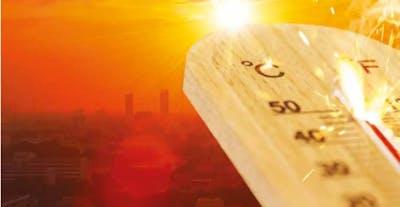Making the cold-chain and clean cooling cool for schools
In many of our homes, we know what to do when someone brings a bottle of milk back from the shop: it goes straight into the fridge.
But what happens if there is no fridge?
The milk must be boiled immediately — and if it’s not going to be used soon, you’ll likely boil it again and again just to keep it safe.
Now imagine a life without refrigeration. Milk has to be boiled immediately to stop it from spoiling. And if it’s not used soon, it needs to be boiled again… and again. Every single day.
Now imagine trying the same trick with tomatoes, spinach, strawberries, or fish. You can’t boil a tomato to keep it fresh. You can’t re-fry your leafy greens every 8 hours. That’s where the cold chain comes in.
...Welcome to the world of cold chains and clean cooling.
Cold chains are not just for scientists and engineers
The cold chain is the “invisible highway” that keeps food fresh, medicines safe, and economies thriving. It’s a series of temperature-controlled steps from production to consumption, and it’s one of the most important (and underappreciated) systems in the modern world. Without it, food spoils faster, farmers lose income, children go hungry, vaccines lose their ability to work, and markets shrink. Yet most students grow up unaware of how crucial the cold chain is to their daily lives.
By introducing cold chain and clean cooling awareness in schools, we prepare the next generation of thinkers, builders, and problem-solvers to engage with a challenge that affects health, hunger, climate, and commerce.
Did you know?
- 37% of food is lost between production and consumption in sub-Saharan Africa.
- COVID-19 vaccines had to be kept at specific temperatures — the cold chain helped deliver them worldwide.
- Clean cooling solutions can be powered by the sun, making it perfect for areas with unreliable electricity.
So why bring this awareness to schools?
Because this invisible system affects everything – from lunchboxes to livelihoods. And understanding it can spark powerful change.
Here’s why:
- Sparking curiosity early – When students learn that something as simple as refrigeration can reduce hunger and global warming, their world opens up. Suddenly, science becomes connected to purpose. They begin to ask questions – and when they find answers, it leads to creative solutions.
- Building climate-conscious citizens – Climate change is making food storage even more difficult. Rising global temperatures mean food spoils faster, and power outages make cooling unreliable. Introducing clean cooling and energy-efficient refrigeration awareness in schools helps students become climate-smart problem solvers, ready to design resilient systems that don’t rely on expensive or polluting technologies.
- Inspiring careers in clean cooling – The cold chain industry needs more hands and minds. Introducing it early means more students may consider careers in refrigeration technology, agri-logistics, clean energy, or supply chain innovation.
- Linking theory to real-world impact – Physics, chemistry, and geography lessons become more tangible when students are given the chance to connect science with solutions. Students get to learn how temperature control affects products like milk, or how a solar-powered cold room can save an entire harvest.
- Encouraging innovation and systems thinking – Young people are incredible innovators. With the right exposure, a classroom experiment could turn into the next breakthrough.
- Reducing loss starts with awareness – Many children don’t realize the cost of food waste or the role that cold storage plays in preventing it. By learning about the cold chain, they also learn about responsible consumption and sustainable living.
- Supporting the sustainable development goals – Teaching cold chains supports key goals: Zero Hunger (SDG 2), Good Health and Well-being (SDG 3), Affordable and Clean Energy (SDG 7), Climate Action (SDG 13), and more.
Making it fun
The cold chain may sound technical, but learning about it does not have to be boring. Imagine:
- Cold chain clubs: Where students perform simple cold chain-related experiments.
- Design challenges: Where learners pitch creative solutions to reduce food spoilage in their homes and communities.
- Field trips: To local farms, markets, or labs to see cold chains in action.
- “Farm to Fork” games: That simulate managing perishable goods from farm to fork.
Final thoughts
In places where food insecurity, youth unemployment, and climate vulnerability are everyday realities, we can’t afford to wait until after learners graduate from university before introducing them to the concept of cold chains. By introducing cold chain and clean cooling concepts into schools and universities, we’re not just adding another topic — we’re planting the seeds of resilience, innovation, and empowerment.
Because the next time a student goes for that agriculture or physics or commerce lesson, they might not just be preparing for an exam—they might be preparing to solve some of the world’s coolest challenges!


